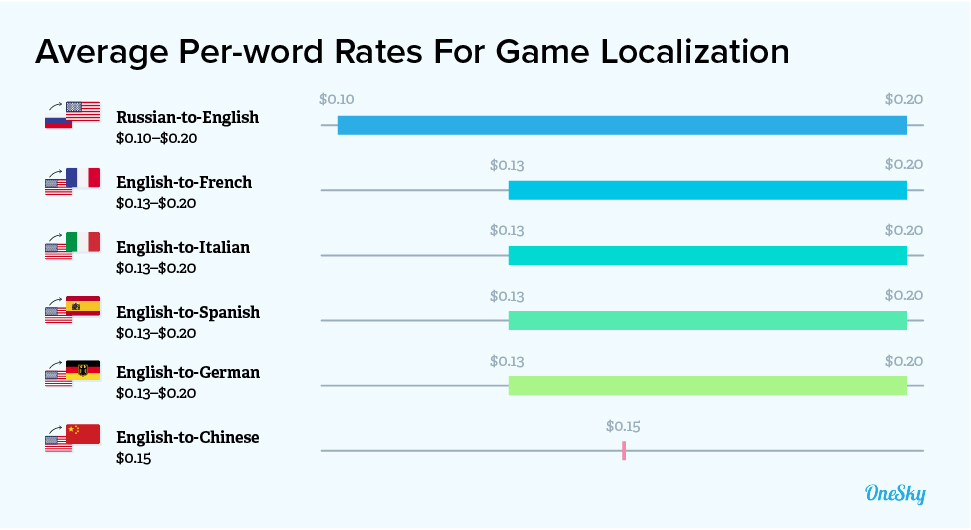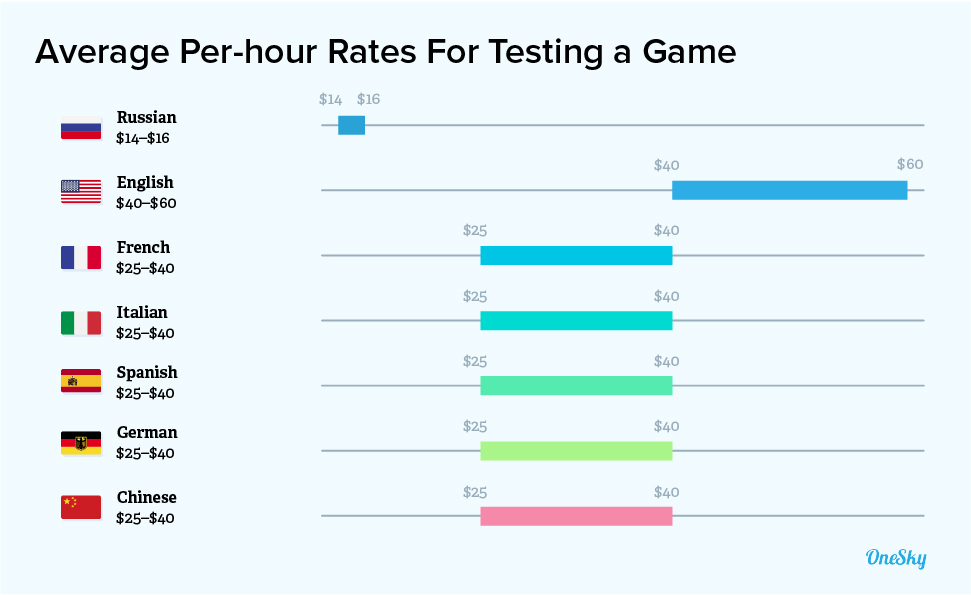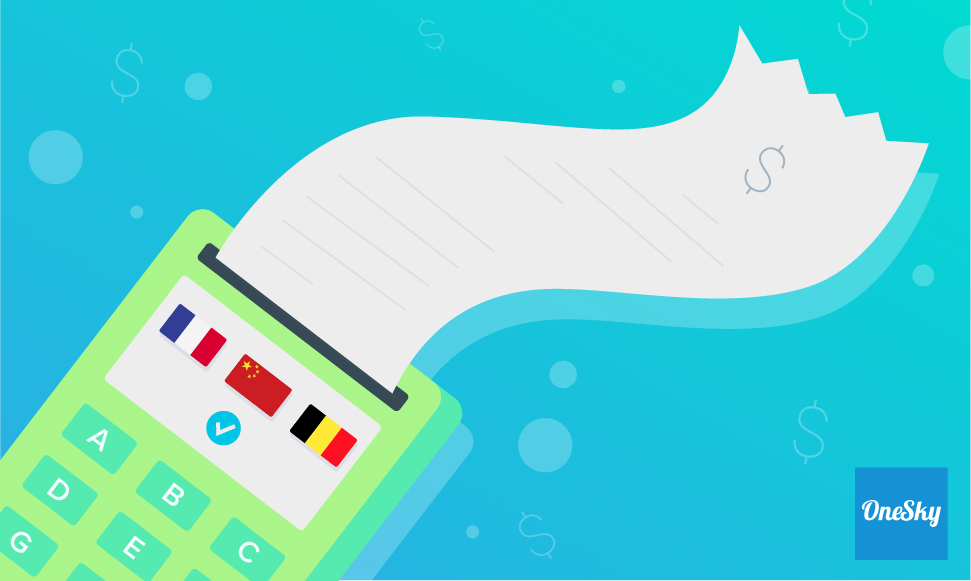Localization Rates: What to Expect
The cost of localization isn’t insignificant, but the ROI is worth it when you successfully enter the global market. Not to mention, the cost of not localizing your content or using poorly translated content can be devastating.
But how much does localization cost? What localization rates can you expect from service providers?
Read on to see what to expect and how to choose the right translation provider to support your localization efforts.
Factors Affecting Localization Rates
Localization services can vary greatly, so you should understand the various factors that impact the cost of translation and localization.
- The complexity of the target language and the cost of living in the target markets. For example, Norwegian, Swedish, Icelandic, Finnish, Japanese, and Korean are the most costly languages to translate.
- The feasibility of the language pair. For example, it’s easier (and cheaper) to find a translator for English-Portuguese than for Turkish-Icelandic.
- The number of languages you’re translating the source content into. You can gain some efficiency or get a bulk discount when you localize for different languages all at once.
- The timeline of your localization project. Some service providers offer a quick turnaround time, but you may have to pay a rush fee.
- The word count and frequency that a word or phrase is repeated in the content. For example, a vendor can leverage translation memoryto lower the cost of translating frequently used phrases.
- The number of visual elements (e.g., graphic text, illustrations, photos, videos) that need to be translated, re-created, or captioned.
- The nature of your project. For example, if you’re localizing a video game, seek out translators who are avid gamers in the local community. The requirement of specialized expertise can increase the localization cost.
- The engineering effort that’s required to implement the localized content. For example, if you perform internationalizationat the start of the project, the development team will need less time to integrate the translated text.
- Project management, localization tools, workflow automation technologies, quality assurance (QA) reviews, etc. will impact the cost. Some of them may require an upfront investment.
How To Choose the Right Localization Service For Your Budget
The cost of localization can vary widely depending on your business requirements and expectations.
At the high end of the spectrum, enterprise-level translation services can give you access to professional translators with expert knowledge in your target market and language. They charge an average of USD 0.20 per word.
At the lower end, you may find smaller translation agencies that employ native speakers who may not have as many certifications but are capable of working with specific language pairs. These agencies typically charge around USD 0.08 per word.
You can also hire language service providers (LSPs) that specialize in different industries or subject matters, such as gaming, law, healthcare, food, and more. Their pricing often varies based on the project and language pair.

Typically, the per-word rate for localization includes translation, revision by a second linguist, and automatic error checks. However, it doesn’t cover testing — a critical step in the localization process, especially if you’re launching a video game or software.

Here’s what to consider when budgeting for a localization service:
- If your content is unique and highly specialized, find a translation agency that can give you access to professional translators with the required knowledge and experience to ensure high-quality translation.
- If you need to preserve your brand voice, user experience, and emotional appeal in the translated text, hire translators who specialize in marketing content and will take the time to understand your brand.
- If you don’t have a multilingual staff who can review the translated text, set aside a budget to hire reviewers to support the quality assurance process.
- When launching in new markets, you may need to translate collateral materials to support your localization efforts. These can include website content, blog posts, landing pages, e-books, emails, white papers, press releases, social media posts, and more.
Making Your Localization Budget Work For You
It may be tempting to use a lower-cost solution for your localization project, especially if you’re working with a limited budget.
Don’t skimp on quality!
Besides the high cost of reworking poorly translated content post-launch, you could risk alienating your target audience, missing the mark on your brand voice, and even landing in legal hot waters if your content doesn’t meet compliance requirements.
Instead, prioritize the content you need to translate and implement your localization project in phases to gain greater control over your spending.
Invest in a localization service that not only provides high-quality translations but also has experience in your industry. It should offer robust localization tools to help improve accuracy and cost-efficiency. Inquire about additional services such as project management, QA, and testing to help you streamline the process.
Here at OneSky, we offer high-quality translation services with a flexible pricing structure to suit your budget.
Our all-in-one platform has all the tools you need to automate workflows, manage team communications, conduct testing, and orchestrate a localization project. You can also gain access to a dedicated translation manager and over 1,000 professional translators fluent in 50+ languages.
The end-to-end approach means you can optimize cost-efficiency while ensuring high-quality translation every step of the way. Try OneSky for free and see how you can make your localization budget go further.



 Written by -
Written by - 




 Written by
Written by 


